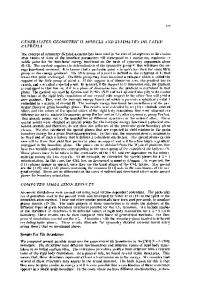Dislocation Dynamics in Ni 3 Al: Experiments and Computations
- PDF / 991,590 Bytes
- 6 Pages / 393.3 x 625.32 pts Page_size
- 82 Downloads / 350 Views
and compression tests to measure dislocation velocity as a function of stress in Ni3AI [2] and Ni 3AI (Ti) [3]. Due to the nature of the techniques used, only a limited stress regime was probed. In contrast, the soft recovery plate impact technique has been successfully used in the past to measure dislocation velocities in the high-stress regime in LiF single crystals [4]. A combination of such techniques would allow one to obtain the dependence of dislocation velocity on stress over a broader range of stresses. Computational efforts have also been used to investigate core structures of dislocations in Ni 3AAand their mobility in response to an external stress [5,6]. The current investigation is focused on studying dislocation dynamics in Ni 3AA(Hf, B) using a combination of experiments and atomic-level simulations. Specifically, four-point bending tests are being conducted to measure dislocation velocity in the low-to-intermediate stress regime and plate impact experiments to provide the corresponding response in the intermediate-to-high stress regime. Molecular statics simulations using embedded atom potentials have been employed to estimate frictional stress for both edge and screw dislocations. In this paper, experimental observations from the four-point bend tests and some of the computational results are presented and their implications are discussed. EXPERIMENTAL PROCEDURE A single crystal of Ni3A1 with minor additions of Hf (1.5%) and B (0.2%) was selected for the present study. The crystal was grown by the Bridgeman technique and a portion of this crystal was provided to us by Dr. P, M. Hazzledine of UES, Inc., in Dayton, OH. X-ray back-reflection Laue technique was used to orient the crystal along the desired orientations for machining four-point bend specKK10.10.1 Mat. Res. Soc. Symp. Proc. Vol. 552 0 1999 Materials Research Society
imens. The details of the orientations are provided later in the paper. The specimens were machined from the crystal using electro-discharge machining techniques and annealed in vacuum at 1200'C for 100 h in an attempt to reduce the initial dislocation density. An electrolytic etchant [7] was modified in order to observe dislocation etch-pits in Ni 3AI (Hf, B). The etchant has the composition of 40 ml methanol, 40 ml of H3P0 4 , 22 ml of HNO 3 and 0.25 grams of FeC13, 6H 20. The electrolytic cell was operated at a voltage of 1.7-2.0 V and at a current den-
sity of 0.05 A/cm 2 .A stainless steel beaker is used as the cathode and the specimen (Ni 3Al) acts as the anode. The etchant works mainly for f 100} surfaces and surfaces within 150 from I 100}. The dislocation etch-pits are square in shape and 2-5 gtm in size. The etch-pits within the dendrites were etched more selectively than those in the interdendritic region. Figure 1 shows the dislocation etch-pits on a {100} surface. Four-point bending tests were designed to load the specimens. A typical four-point bending specimen was close to 31 mm x 4 mm x 3 mm in dimensions with the longest side along the [110]
type directio
Data Loading...











